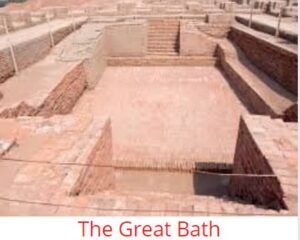
Pre-Historic Period : Most Important Points
Quickly Revise Most Important Points of Pre-Historic Period
Home » Quick Revision Guide » Key features of Indus Valley Civilization

Most important features of Indus Valley Civilization
A Bronze Age Civilization that flourished between 2500-1750 BC in the north western parts of India and present-day Pakistan.
Also called the ‘Harappan Civilization’ after the name of its first discovered site.
Most unique feature - Divided into two sections:
Citadel – Smaller but built on higher platform.
Lower Town – Much larger but lower.
Main crops - Wheat and barley
Animals were domesticated However, The use of horse is not firmly established.
People of this civilization did not know about Iron.
Internal trade was extensive - Based on barter system.
Foreign trade was mainly conducted with Mesopotamia, Afghanistan, Iran and Oman.
Figure of a dancing girl from Mohenjodaro made of bronze.
Experts in bead-making.
Pottery - Plain/ Red and black painted .
Seals with engravings.
Pashupati Seal from Mohenjo Daro.
Pictographic, still not fully deciphered.
Boustrophedon method ( written from right to left in first line and from left to right in second line ) adopted.
Used sewn clothing - Figure of a bearded man found in Mohenjo-Daro.
Use of Beads, ornaments and cosmetics was common.
Complete burial and post-cremation burial common.
Lothal and Harappa - Evidence of coffins burial.
Harappa
Mohenjo-Daro
Chanhudaro
Kalibangan (Black Bangles)
Dholavira
Lothal
Rangpur
Surkotda
Rakhigarhi
Various theories have been given. Some of them are :
Combination of natural factors like,
Aryan invasion

Quickly Revise Most Important Points of Pre-Historic Period

Most Important Points about Historical Background of Indian Constitution.

Quickly Revise Most Important Points about Vedic Literature

Quickly Revise Most Important Points about Rig Vedic Period